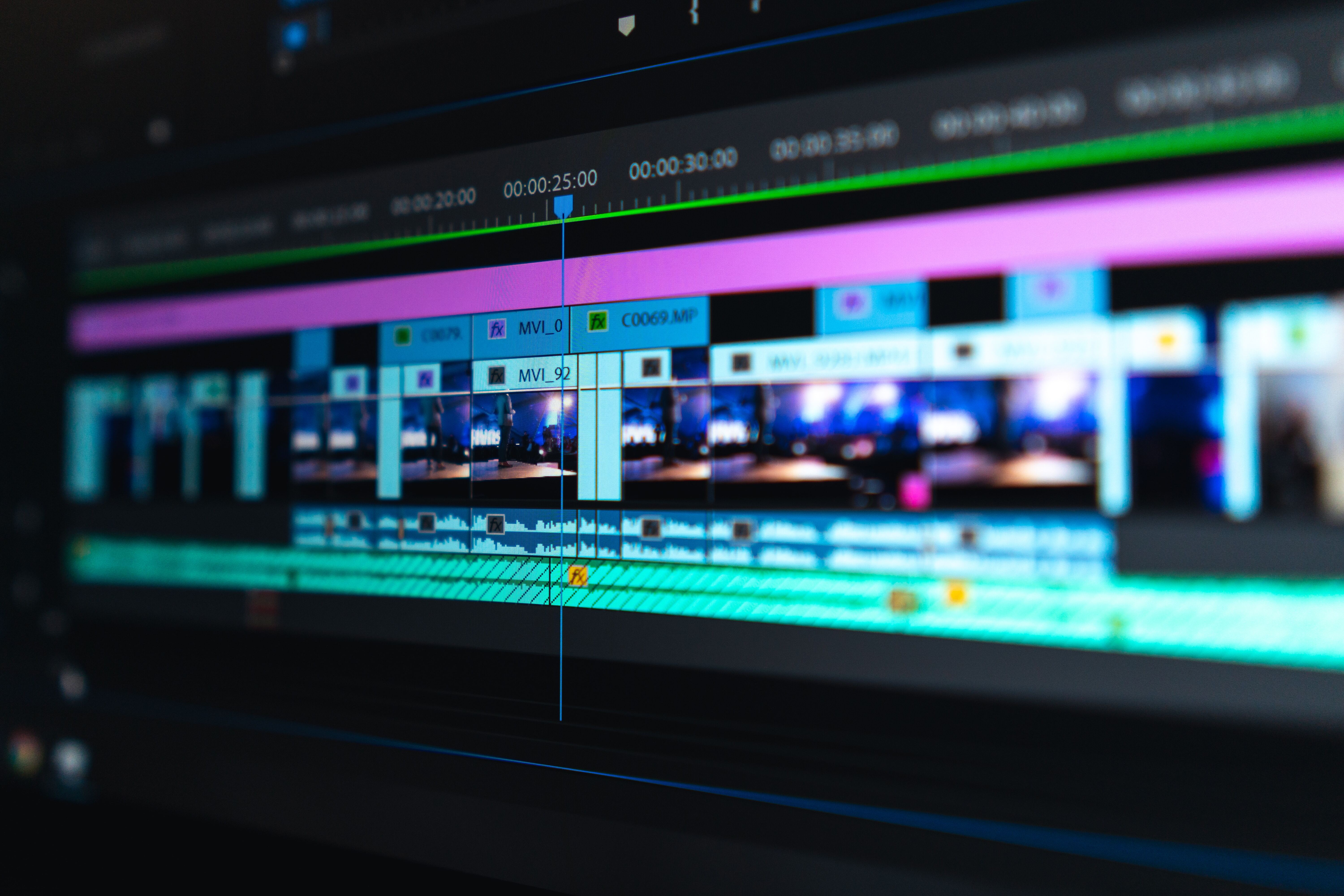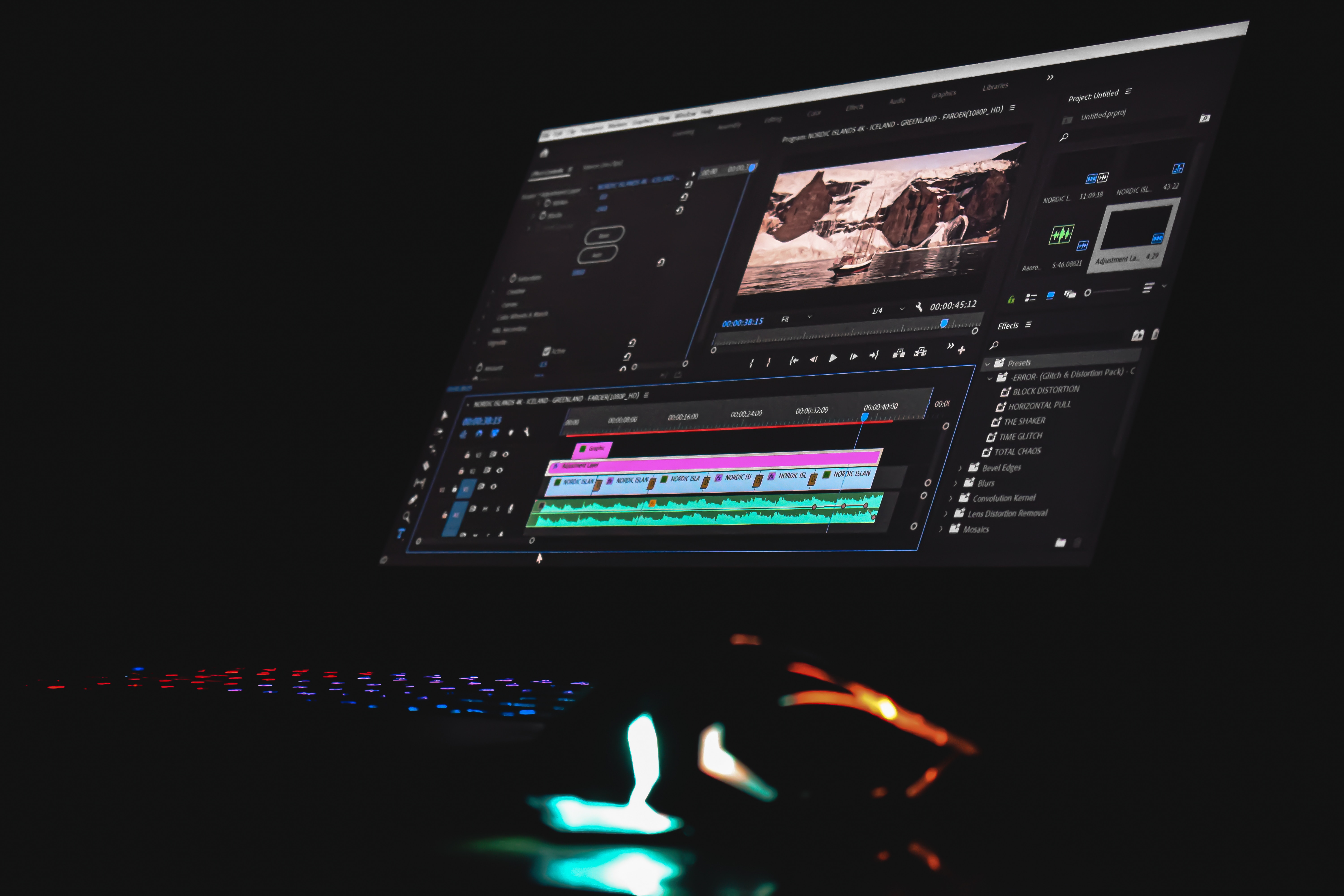Visual storytelling has become integral to most people's daily communication in our rapidly evolving digital age. Platforms like YouTube, TikTok, and Instagram Reels have transformed from entertainment channels to potent mediums for content creators, businesses, and influencers. As a result, the ability to effectively edit and craft compelling narratives has never been more valuable.
But how to edit videos?
Whether you're a complete beginner or someone with a smattering of experience, video editing can seem daunting. But fret not, for you've arrived at the perfect starting point! This guide is designed to ease you into the world of video editing. We aim to help you understand the basics of video editing and its foundational techniques and tools.
Time to turn your raw footage into engaging content!
Key Steps Before Starting Your Video Editing Project
Starting your video editing project can seem overwhelming, especially with all the steps and decisions involved. Grabbing the right video editing software for YouTube and ensuring you've covered the basics can make the entire process smoother. So, let's delve deeper into these steps.
Organize Your Video Footage
A well-organized workspace can significantly influence the outcome of your project. The foundation of any good edit is organization. By meticulously grouping your clips by theme, relevance, or even chronological order, you set yourself up for an effortless editing experience. Streamlining this process ensures that no critical shots are forgotten or left out.
A tidy workspace also reduces distractions, letting you concentrate on the core of your story. Instead of wasting time searching through a maze of clips, you can channel your energies into crafting a compelling narrative. With everything in its place, your creative juices can flow uninterrupted.
Choose the Best Video Editing Software for Your Needs
After organizing your footage, the next pivotal step is selecting the right tools for the job. There is an impressive spectrum of video editing software on the market. Catering to different needs and skill levels, these tools can range from simple, user-friendly platforms to more advanced, professional-grade software.
Beginners often gravitate towards simple video editing software like iMovie or Filmora. These are designed to be user-friendly. Coupled with helpful video editing tutorials, these video editing software for beginners offer an easy learning curve.
However, a professional video editor may lean more towards powerhouse tools like Adobe Premiere Pro or Final Cut Pro, known for their comprehensive features and versatility. Regardless of where you fall on this spectrum, it's crucial to ensure your chosen video editing program meets the unique demands of your project and remains within your budget. Investing in the right tool can elevate your editing process, refining your output to perfection.
Import Media Files in the Same File Format
With your software in place, you now move on to the intricacies of your video files.
A seemingly minor yet critical aspect of pre-editing is ensuring uniformity in your video file formats. Different file types can clash, leading to unexpected technical issues or reduced final video quality. A consistent file format not only simplifies the editing workflow but also maintains the quality of your footage. To aid in achieving this consistency, there are various tools available.
For instance, the software HandBrake can seamlessly convert diverse media types into a unified format, making creating a video with pictures and music easier. Preempting potential glitches by unifying your file formats can save hours of troubleshooting later, helping you maintain momentum and focus on the creative aspects of your edit.
Create an Outline Detailing Key Video Components
As you prepare to dive into the actual editing, one final yet vital preparatory step remains: outlining. Just as a builder wouldn't construct without blueprints, a video editor benefits immensely from a well-thought-out plan. Prioritizing planning and previsualization can make the subsequent editing phases more streamlined.
Start by drafting a rough storyboard or an outline detailing the chronological order of key footage, voiceovers, B-rolls, and graphics. This blueprint provides a visual representation of your final product and acts as a guiding light, steering your decisions in the desired direction. The roadmap will help you navigate the maze of editing video, transforming raw footage into a captivating story.
You can also use video collaboration tools to tackle a video project as a team.

The Fundamentals of the Video Editing Process
With a firm grasp on pre-editing essentials, the next stage is diving into the basic video editing process itself. This involves taking various elements to create an engaging narrative that captures and retains your audience's attention.
Let's explore the fundamental editing techniques and choices that are the backbone of professional video editing.
Learn the Art of Color Correction and Color Grading
Colors can evoke deep emotions and set the entire mood of a video. The first step is color correction, which aims to achieve a consistent look across all clips. Adjusting elements like white balance, exposure, and contrast lays the groundwork for a visually consistent narrative.
Once the correction is completed, the canvas is primed for artistic expression through color grading. This process allows you to impart your personal touch, infusing the video with tones that resonate with the intended emotion. Whether you aim for a vintage feel, a futuristic neon look, or a sun-kissed natural vibe, color grading is the key to molding viewer perception.
Use Video Transitions, Visual Effects, and Match Cuts
The rhythm and flow of your story are dictated largely by the transitions you employ. Think of them as the glue holding your narrative together. The market offers many transition options, from sharp jump cuts to soft cross dissolves. However, the narrative, rather than personal preference, should be the primary determiner of your choice.
While it's tempting to dabble in flashy, intricate transitions with a video effects editor, it's often the subtle, simple cuts that woo the viewers. Choosing the right transitions ensures your story unfolds seamlessly, guiding viewers effortlessly from one scene to the next.
Ensure You Are Using High-Quality Audio
When it comes to video editing, it's easy to become engrossed in the visual. But audio plays an equally pivotal role. Superior auditory quality elevates visual content, providing an immersive experience for the viewer.
Prioritize investing in high-quality microphones to capture pristine sound during filming. Minimizing background noise and disturbances during recording pays dividends in the post-production phase.
Even with the best initial recording, post-production audio refinement is crucial. Tools like Audacity can help you fine-tune audio levels, remove residual noise, and balance different sound elements, ensuring clarity and an impactful auditory experience.
Add Text and Graphics
While visuals and audio form the essence of a video, sometimes, the message requires reinforcement. This is where text and graphics play a pivotal role. Whether it's titles, subtitles, annotations, or infographics, these visual aids amplify your message and offer clarity.
However, it's essential to maintain consistency. A unified design language, encompassing fonts, colors, and styles, adds a layer of professionalism — and legibility is key. Ensure your text stands out against the video background, ensuring viewers can easily absorb the information.
Choose the Right Music and Sound Effects
Music and sound effects are the heartbeat of any video, often evoking deeper emotional responses than visuals alone. While the perfect track can elevate your content, navigating copyright is essential. The wrong choice can lead to legal complications and potential removal from platforms.
Prioritize sourcing music that complements your video's tone and respects all legal boundaries, ensuring your content remains accessible and dispute-free.
Export Your Finished Video Project
After investing time and effort in editing, the final step is presenting your masterpiece to the world. Exporting might seem straightforward, but it's more than just clicking a button. Tailoring your export settings to align with your target platform's specifications is crucial.
Resolution, bit rate, and format adjustments can influence how your video is perceived. An optimized export ensures your hard work is showcased in its full glory, captivating audiences and leaving a lasting impression.
Elevate Your Video Projects With Premium Royalty-Free Music
Music can truly make or break a video. However, copyright infringements can pose significant challenges, sometimes stifling creators and placing barriers to their creative visions. This is where royalty-free music shines. Offering a safe haven from potential legal pitfalls, royalty-free tracks provide the peace of mind every creator seeks.
For hassle-free, premium royalty-free music, look no further. Explore a diverse collection at stockmusic.net, tailoring your video projects to perfection. Our vast and diverse collection allows creators to find the perfect musical accompaniment tailored to their unique projects. Whether it's a dramatic climax, a serene landscape, or a comedic skit, the right tune awaits you.
Video editing might seem intricate, but everyone has to start somewhere. A perfect starting point could be an online video editing course and instructional videos to help you grasp the basic concepts and fundamentals of video editing. With a structured approach and the right resources, your visions can materialize seamlessly. So dive in, practice your video editing skills, and let your creativity soar!




